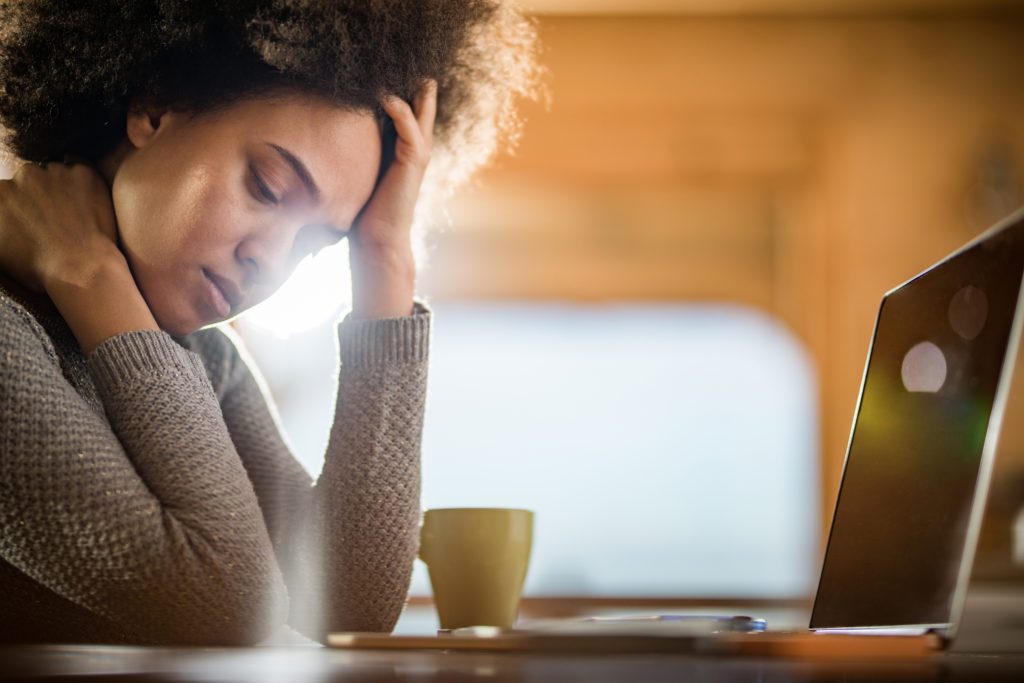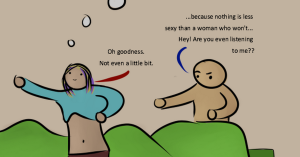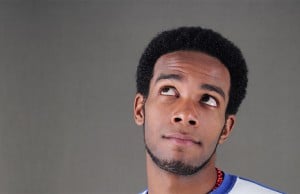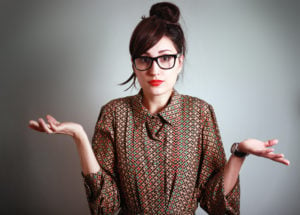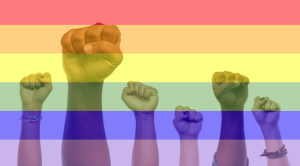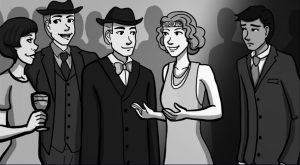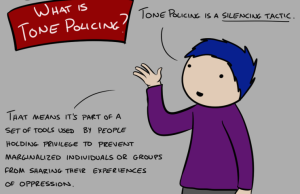Though polyamory has become (slightly) more mainstream-most articles and self-help books focus on abled and neurotypical folks.
As someone who’s disabled and non-monogamous, it’s hard for me to relate to most of them. So many of the things me and my partner(s) have to navigate are often ignored or glossed over.
Mainstream polyamory discourse generally presumes abledness and neurotypicality. There are no guidelines for how to navigate having severely limited energy and multiple partners, or how anxiety may affect jealousy and fear, or the difficulty of getting new partners up to speed on your access needs.
What people in these communities need to know is that disability can complicate and enhance polyamory in many unique ways. It’s fascinating to figure out what can work best at any given time.
It’s also important to note that while there are nuanced differences between the terms polyamory, open relationships, and non-monogamy, I am using the terms interchangeably in this article to mean being open to more than one sexual and/or romantic partner at a time.
Some of the things disabled polyamorous folks may have to pay special attention to include:
1. Intimacy Often Requires Adjustments
Disability activist Mia Mingus coined the term “access intimacy” to refer to when a partner is able to understand your particular needs around bodies, sex and relationships.
Finding partners who are willing to make the necessary adjustments to make a relationship accessible is a hurdle and opportunity that disabled people face.
For example, for scent sensitive people this can mean partners not wearing any scented products. While accessibility can be framed as an inconvenience or a burden, it’s also a way to show your partner(s) love and understanding in a deeply personal way.
Having and developing access intimacy is an amazing opportunity to give and show love and understanding (and weed out people who aren’t worth our time!)
2. Ableism Makes It Harder To Find Partners
It can be hard enough to find one partner, let alone more than one. That’s even more difficult when you’re disabled. Not through any fault of our own, but ableism can paint disabled people as inherently sexless or undesirable.
This is magnified for folks with visible disabilities and other overlapping oppressions, such as fatness and queerness. One friend I spoke to who did not want to be named explained her experience, “as a disabled-since-birth superfat genderqueer femme, it’s not always possible to find partners who I trust and am able to be open with.”
Alternatively, there may be people who fetishize aspects of our disabilities which can make it hard to figure out whether someone is attracted to us as people or just as objects, if that’s a distinction that we want to make.
3. Being in One or More Relationships When You Have Very Limited or Fluctuating Energy is Hard
Another friend who wanted to remain anonymous mentioned that a big hurdle for her is the impossibility of meeting people when you spend most of your time in bed. While everyone has a limited amount of energy, for some disabled people energy levels can fluctuate wildly or remain very low.
The energy and time it takes to create and maintain relationships (of all kinds) can be a lot of work and having consistent routines with relationships may be impossible for us. Though I identify as non-monogamous and occasionally have other sexual partners, I currently don’t have the energy to maintain other serious romantic relationships.
Honestly, I barely have the energy to maintain the one I have. But, one of the great things about moving away from compulsory monogamy is the opportunity to create the structures that work for us at any given time.
Polyamory doesn’t need to look a specific kind of way, as long as it works for you and your partner(s)!
4. Sometimes the (disabled and non-disabled) partner(s) of disabled people are responsible for some caretaking work.
Sometimes I am too sick to make my own food and rely on my partner to feed me.
Non-monogamy can work great for this as the more people you have for support, the easier the workload is on any one individual. So, if my partner needs a break from that responsibility then someone else can take over.
Conversely, sometimes we may need so much care that our partners don’t have anything left over to give to other partners. It’s important to acknowledge how caregiving responsibilities impact a relationship.
My partner has agoraphobia and get stressed out in social situations, and as his primary mental health support, I need to be available to help him with his anxiety. So if he is going to go on a date, part of my emotional caretaking means being available before and after his date to help him relax and and process and deal with the anxiety.
Practically, this means that we cannot be on dates at the same time and I need to make sure I have the emotional energy for that support. Understanding how I function as an emotional caretaker and making sure I am available when he needs it the most allows us to navigate his agoraphobia in a way that works for both of us.
5. For folks with mental health issues, polyamory can be even more complicated.
I don’t want to relegate mental health to just this section, because it affects all the other categories too. However, I want to make a specific point about the traditional non-monogamy resources not necessarily applying as well when one or both or all partners have mental health issues.
One friend, Demi Simon, says that her mental health issues have made it easier for her to be polyamorous because she already needs to navigate the world in a different way due to her mental health issues, so adding non-monogamy on top of it makes sense to her.
Sometimes the need for open relationships is directly related to mental health. My friend Bear identifies as someone with Dissociative Identity Disorder (often erroneously referred to as multiple personality disorder) which is integral to how and why they practice polyamory.
They say, “I don’t have any illusion one person could meet all my personalities needs. We are very different. Different tastes, different hobbies, different things which make us happy.” Diverse brains can be an asset!
6. Navigating Sex & Bodies Can Be Tricky
While there doesn’t necessarily need to be any sex involved in romantic or other kinds of relationships, for lots of people sex is an important part of how they practice polyamory. As a concrete example, some people’s bodies may prefer sex that involves pain, others may have to work hard to reduce the amount of pain during sex in order for it to work for them.
Having to talk about these aspects of our bodies may be easier for disabled people since we often have to become experts in our bodies in ways that non-disabled people don’t have to. One way this comes into play is what we define as “sex.”
Some disabled people may not be able to express our sexuality in the ways that we want to or in ways that are considered “the norm.” Like everything else, sex may require accommodation too (and that’s fine!). If we have practice asking for what our bodies need when it comes to access at work or school, it may be easier to tune into our sexual needs.
Such as if a certain position causes pain or one person needs to take a rest break. There is very little to say that would be universal except that all bodies are good bodies and anything goes as long as it is between consenting adults!
7. Trauma Plays A Big Role in Relationships
As disabled people, we are twice as likely to have been victims of sexual trauma. This will often affect the ways we do sex and relationships. One disabled friend shared that her (also disabled) partner is generally unable to have sex due to trauma issues and she looks to other partners to meet those needs.
I spoke with Emi Barkus, MTS, MA, LMHCA, a therapist (and friend) who works with clients with trauma histories about what advice she had for disabled non-monogamous people who have experienced trauma.
She said, “It’s important to be especially gentle with yourself and remind yourself to slow down — slow down the disclosures, slow down around intimacy, slow down around decision making, (and) slow down around conflict, until you can check in with yourself and your body and really know you are fully present and that things feel safe and okay to proceed.”
She went on to explain that “having to be aware of, and clear about, one’s needs and desires and limitations… takes a lot of courage and skillfulness, and can take years to hone. For many disabled people, these ways of communicating have been built out of necessity since long before needing them for non-monogamy, so it’s a natural fit.”
***
Since our bodies and/or brains already don’t conform to societal expectations, as disabled people we have a great opportunity to create the kinds of relationships that work for us outside of traditional notions of a monogamous nuclear family!
This is just the beginning of the conversations we need to have and resources we need to develop to make polyamory as much of a possibility for us as it is for non-disabled people.
[do_widget id=’text-101′]
Katie Tastrom is an activist, writer, and lawyer. She writes about living with chronic illnesses, disability justice, fatness, parenting, queerness, bodies, and other stuff. She lives in Syracuse, NY with her four kids and amazing partner. She also watches a lot of TV. You can find more at katietastrom.com or follow her on Twitter at @katietastrom.
Search our 3000+ articles!
Read our articles about:
Our online racial justice training
Used by hundreds of universities, non-profits, and businesses.
Click to learn more
Most Read Articles
- « Previous
- 1
- …
- 30
- 31
- 32


